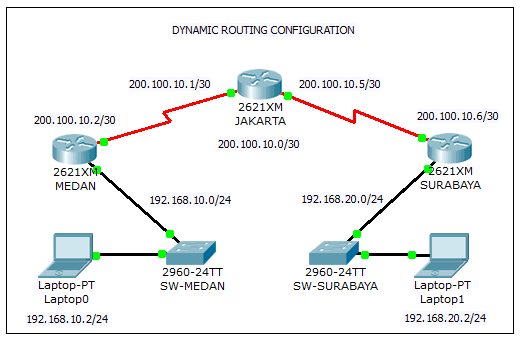Definition of Dynamic Routing in the Network Encyclopedia.
What is Dynamic Routing?
Dynamic Routing is a routing mechanism handled by a routing protocol, such as Routing Information Protocol (RIP) or Open Shortest Path First (OSPF) Protocol, that dynamically exchanges routing information among routers on an internetwork. Routers that use this method are called dynamic routers.
How it works
For a dynamic router to function, a routing protocol must be installed on each router in the internetwork. The routing table of one router is manually seeded with routing information for the first hop, and then the routing protocol takes over and dynamically builds the routing table for each router. Routers periodically exchange their routing information so that if the internetwork is reconfigured or a router goes down, the routing tables of each router are modified accordingly. Hosts on a network need only be configured so that their default gateway address matches the IP address of the local router interface.

Dynamic routers are much simpler to administer than static routers, but they are sometimes less secure because routing protocol information can be spoofed. If the network is reconfigured or a router goes down, it takes time for this information to propagate between the various routers on the network. Routing protocols also create additional network traffic, and different routing protocols offer their own advantages and disadvantages.
Configuring Windows Server as dynamic RIP router
You can configure a multihomed Microsoft Windows NT server as a dynamic RIP router by selecting Enable IP Forwarding on the Routing tab of the TCP/IP property sheet, and then using the Services tab of the Network property sheet to add the RIP for Internet Protocol (IP) service to the server. Another example of a dynamic router is a multihomed computer running Windows NT Server and Microsoft’s Routing and Remote Access Service (RRAS) with either RIP or OSPF configured.
Dynamic routers cannot exchange information with static routers
Dynamic routers cannot exchange information with static routers. To configure static and dynamic routers to work together on the same internetwork, you must add manual routes to the routing tables of both types of routers.